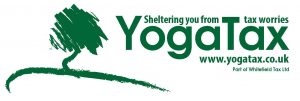Tax obligations when you are both Employed and Self Employed (as a sole trader or business partner) can be confusing.
Here are the things you need to know, in summary:
- Income Tax is aggregated
- National Insurance is charged by source
- All your income and tax paid at source needs to go onto your Self Assessment
Income Tax
Income Tax is charged on aggregate income, no matter what the source is.
For example:
- If you earn £10,000 in Employment and £5,000 from Self Employment, you are assessed on £15,000
- If you earn £10,000 in Employment. £8,000 from renting a property out, £2,000 from bank interest, and £5,000 from Self Employment, you are assessed on £25,000
- If you earn £20,000 in Employment and make a loss of £2,000 from Self Employment, you are assessed on £18,000 (subject to rules about loss relief)
If you have other income like rents, dividends and bank interest, these are aggregated as well, however there are special tax rates applicable to dividends and bank interest within the Income Tax charge.
The tax rates (2024/25) are:
- £0 to £12,570 – 0%
- £12,570 to £50,270 – 20% – Basic Rate Band
- £50,270 to £125,140 – 40% – Higher Rate Band
- over £125,140 – 45% – Additional Rate Band
The £12,570 0% Personal Allowance tapers out on Incomes over £100,000 at £1 tapered deduction for each £2 of income over £100,000 creating a 60% marginal rate.
If you are Employed Income Tax may be taken from your payslip under PAYE (Pay As You Earn) – this amount is offset against the overall liability for the year, when calculating the balance due or repayable. How much tax is taken from your pay in an Employment depends on your Tax Code.
The Tax Code is a method of collecting tax accurately for the vast majority of taxpayers who are outside of Self Assessment (normally as they are not Self Employed / having complicating factors):
- The accuracy of the Tax Code is important if you are not in Self Assessment as it determines how much tax you pay
- If you are in Self Assessment, which you will be if you are Self Employed, then the Tax Code is less important – normally HMRC will allocate your Personal Allowance (£12,570 in 2022/23) against your Tax Code, but as it all comes together on Self Assessment its not critical
Where there are multiple income streams, HMRC quite often get the Tax Code incorrect – if you are in Self Assessment, don’t worry, as it sorts itself out.
For more on Income Tax see How is a Yoga Teacher Taxed?
National Insurance
By contrast National Insurance is charged on each source:
- Class 1 NI is paid on earnings from Employment
- Class 4 is paid on profits from Self Employment
- Class 2 is a voluntary payment by Self employed with low profits to maintain State Pension access
- Class 3 is a voluntary payment (only if you aren’t paying NI elsewhere and want to maintain State Pension access)
Because NI is charged on each source its worked out independently on income from Employment and Self Employment, its collected differently:
- Class 1 is taken from your pay via PAYE
- Class 4 is calculated from your profits on your Self Assessment, and collected through Self Assessment
There are provisions for annual NI maximums but they are complex and little used.
If you are Employed and Self Employed. and below NI thresholds on both sources, consider Voluntary NI to Protect Your State Pension.
For more on NI, including rates, see National Insurance and State Pension for Yoga Teachers
Self Assessment
The aggregation of income from Employment and Self Employment is via your Self Assessment return.
The important thing here is you must include all sources of income, and tax deducted at source, on your Self Assessment.
So you need to enter on the Self Assessment:
- Business profits (use a self employment supplement)
- Jobs and employments (use an a employment supplement, one for each job)
- Rents (land and property supplement)
- Savings income (bank interest, dividends)
- Pension payments or income
- Capital Gains (Capital Gain supplement – not normally due on selling your own house even if you teach there occasionally)
You also enter tax paid at source, and this gets offset against the final tax liability.
Read more about Self Assessment here.
In these Case Studies there are a couple of examples of how the tax liability is calculated where there is both Employed and Self Employed income.


